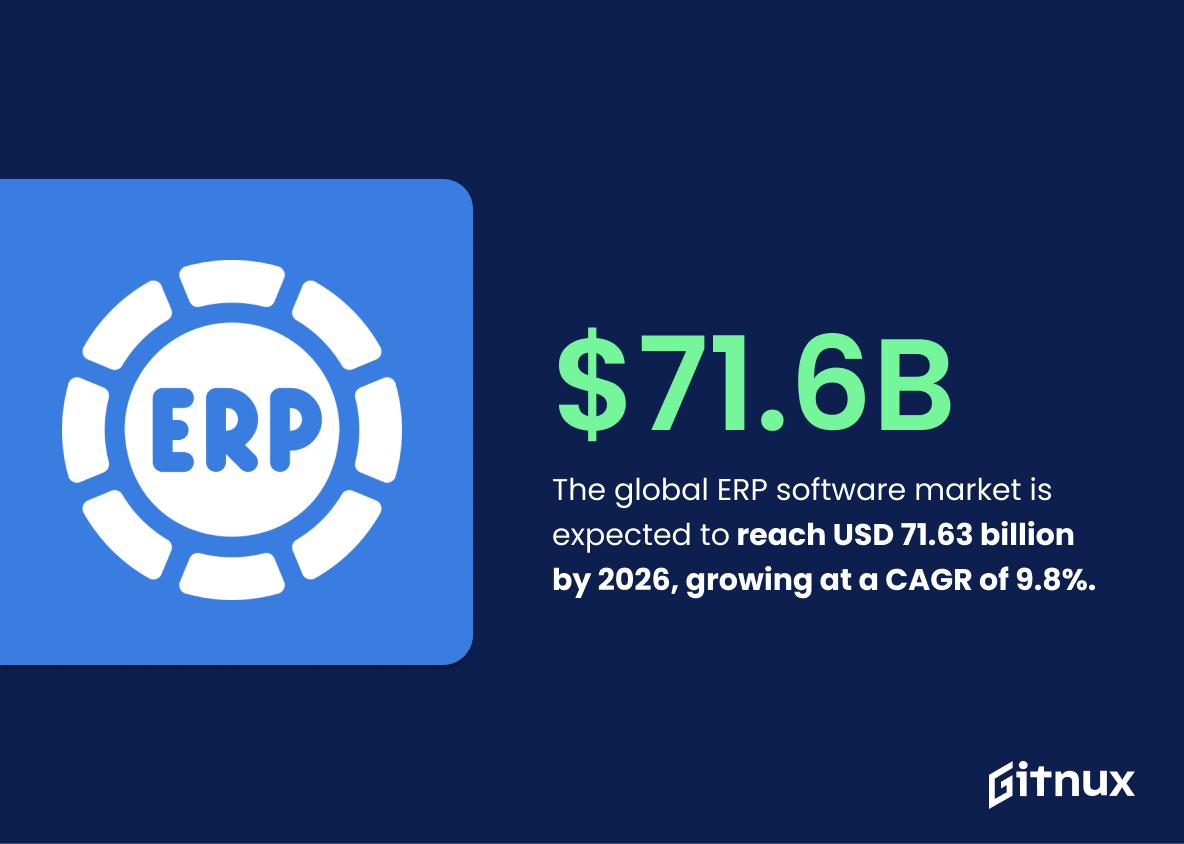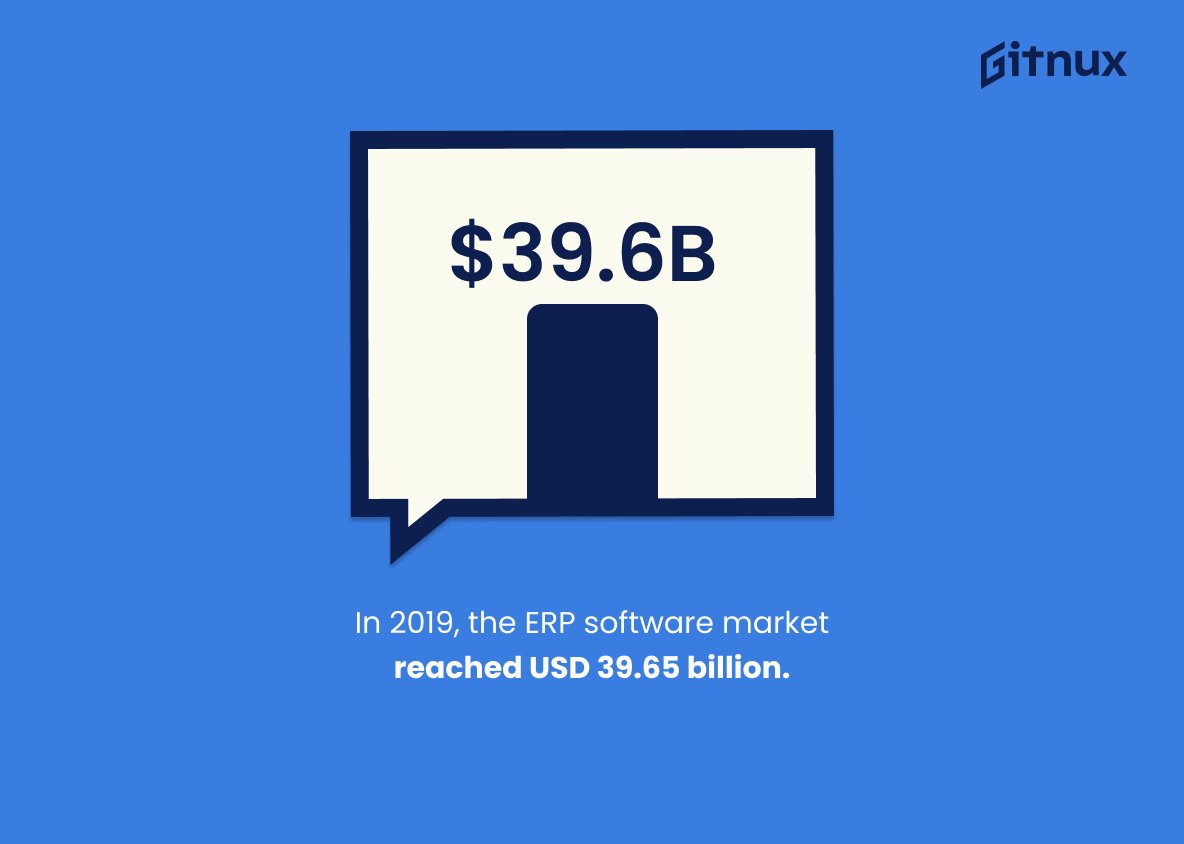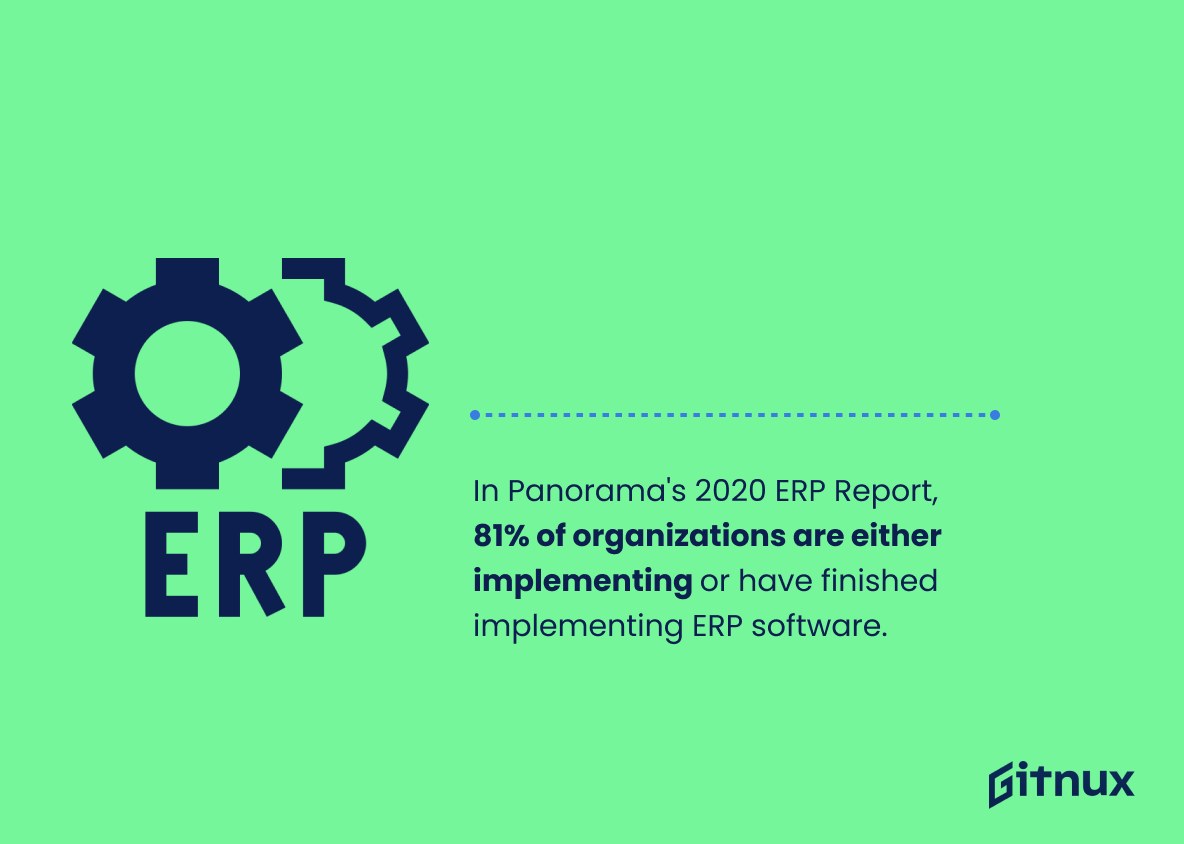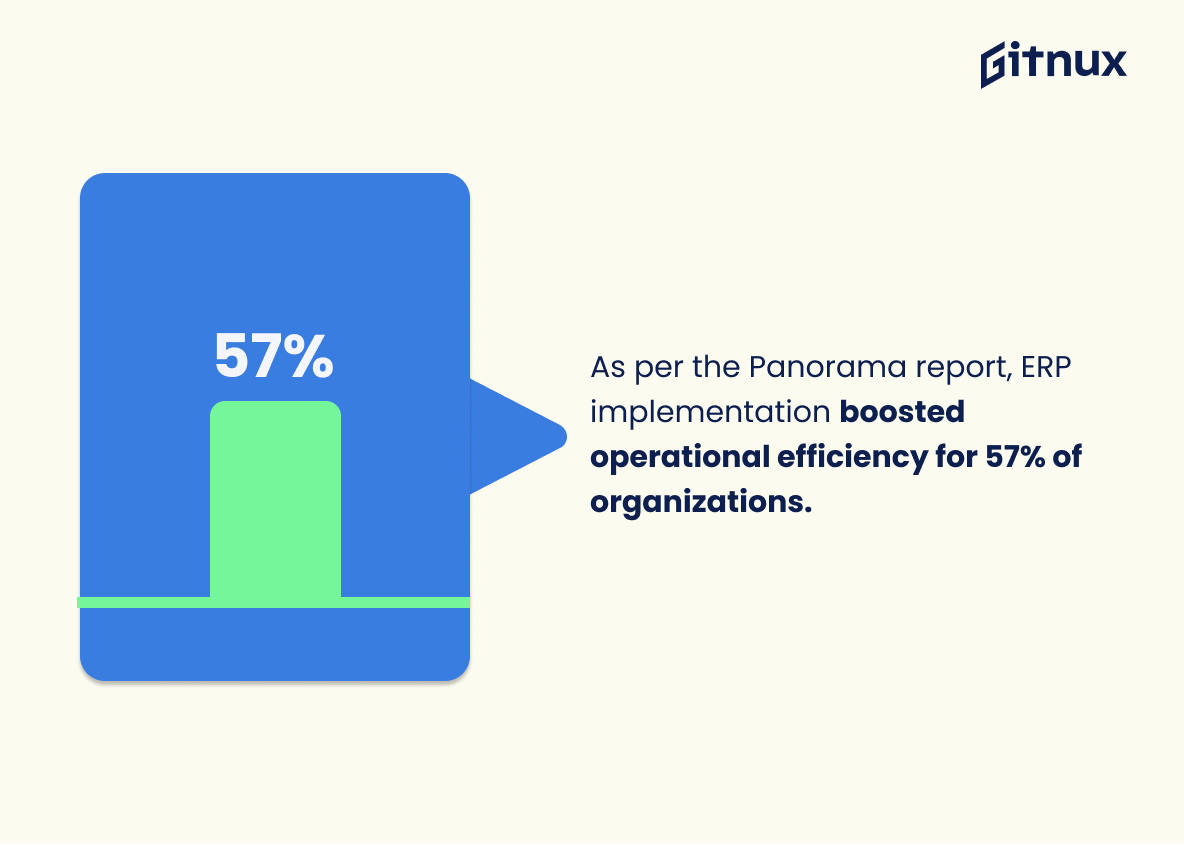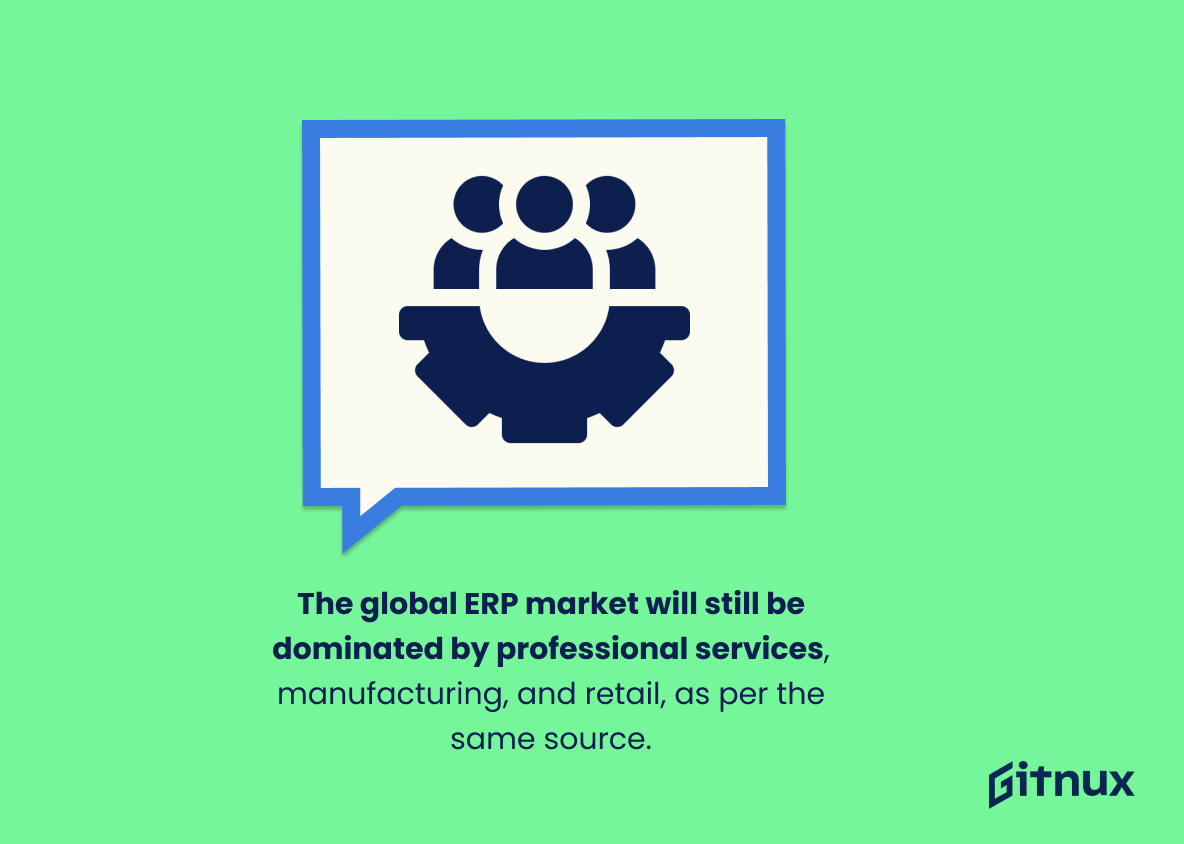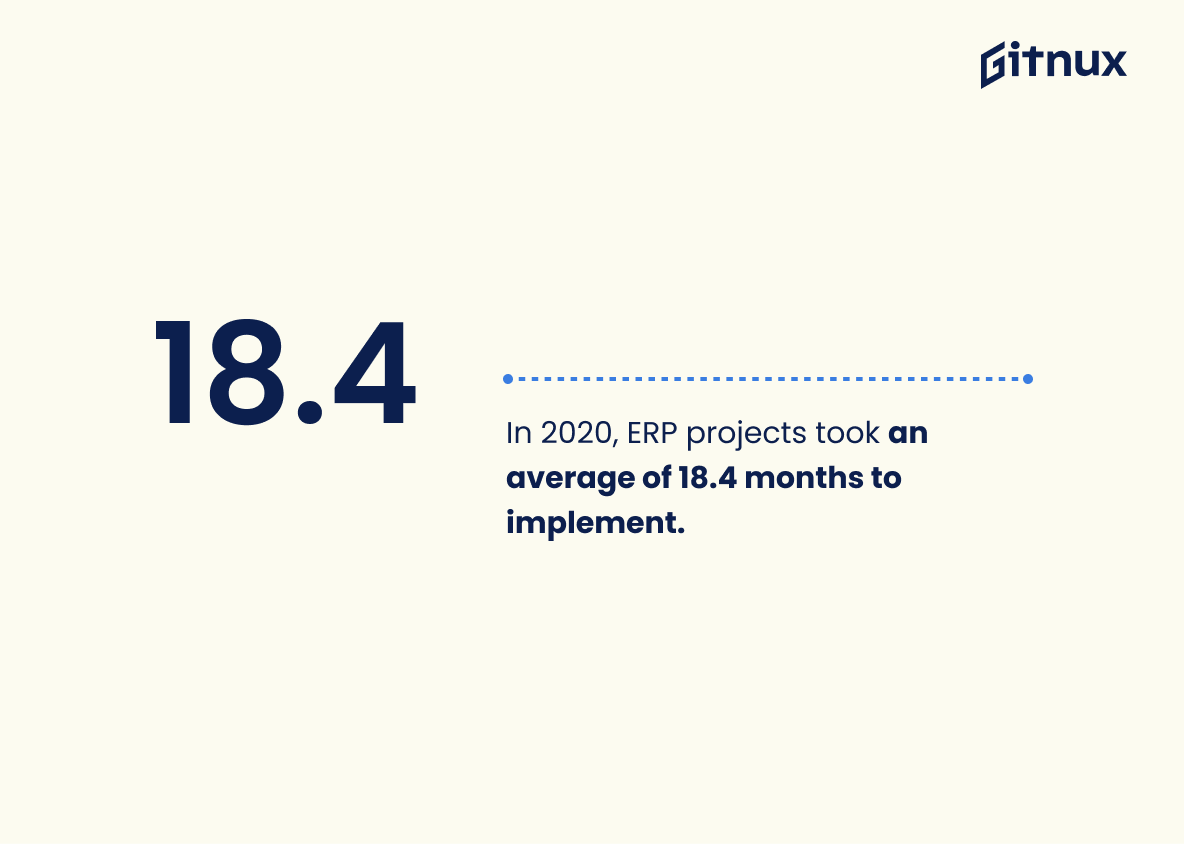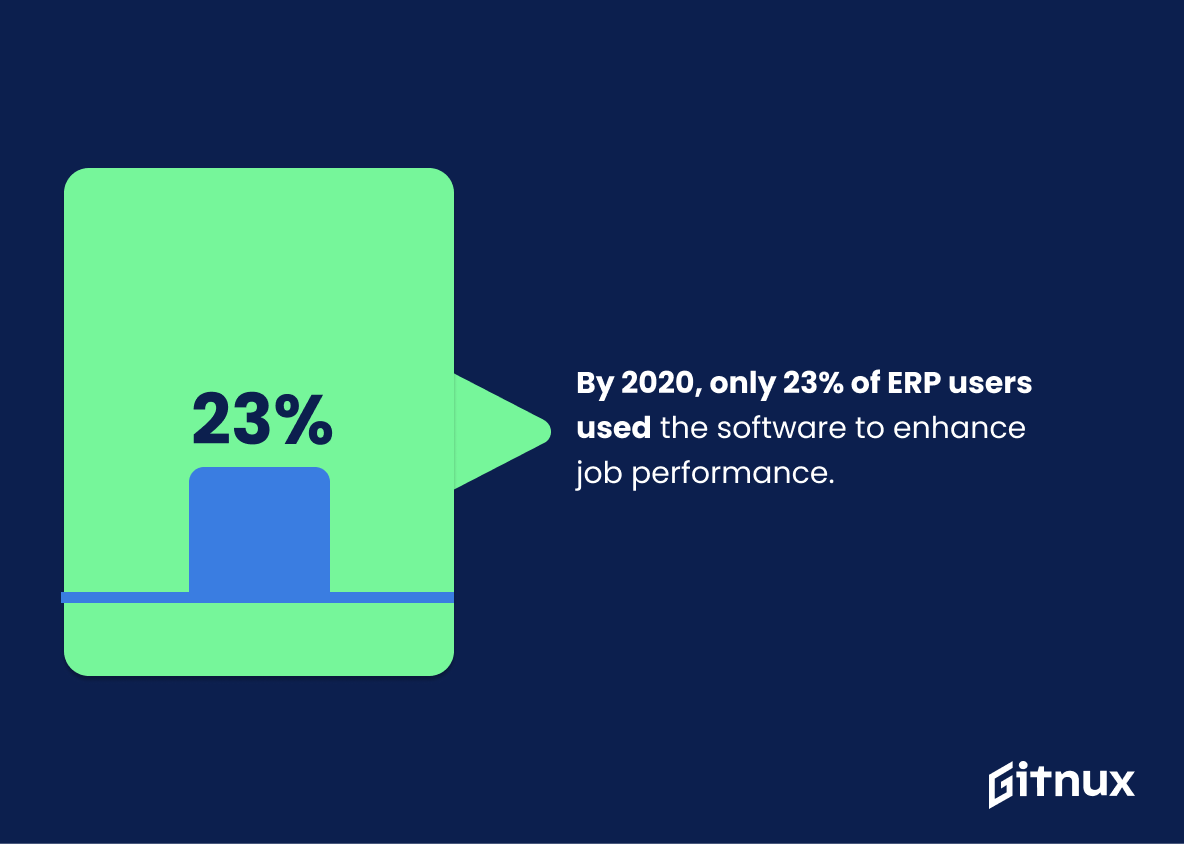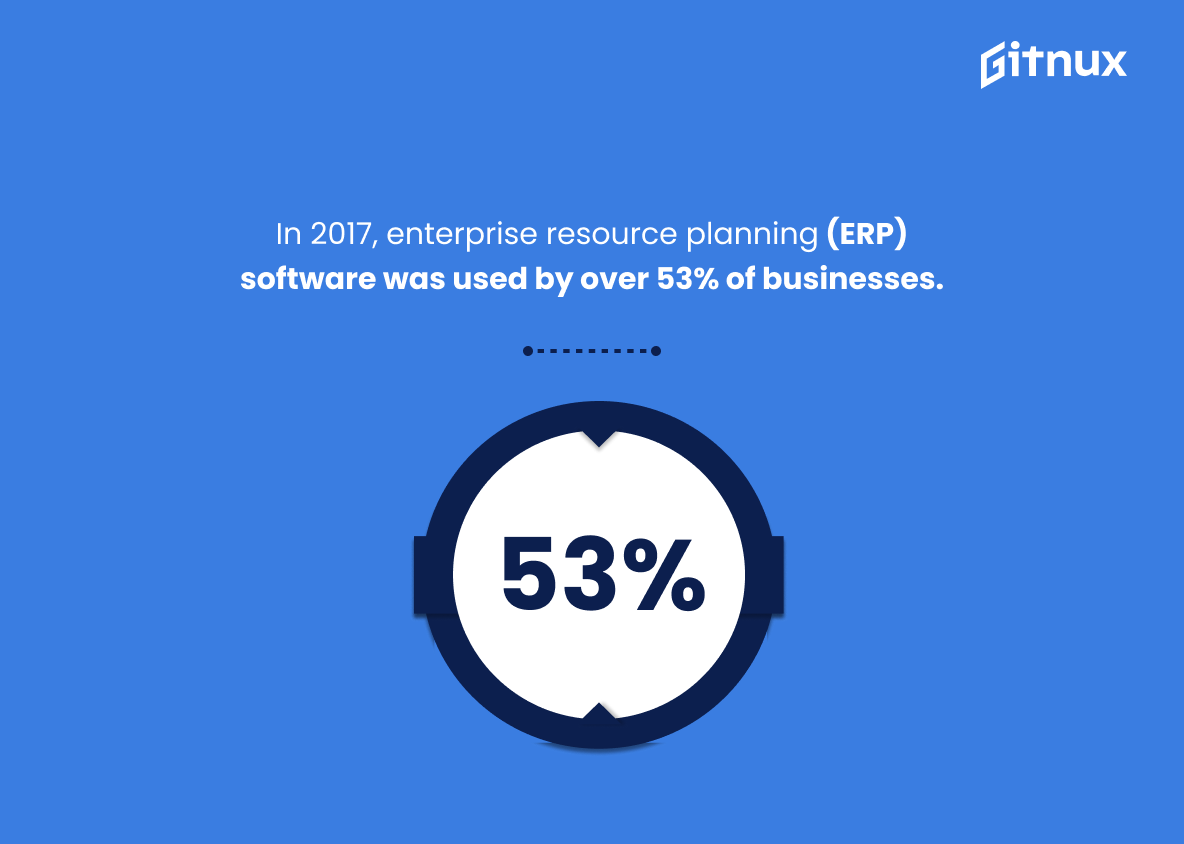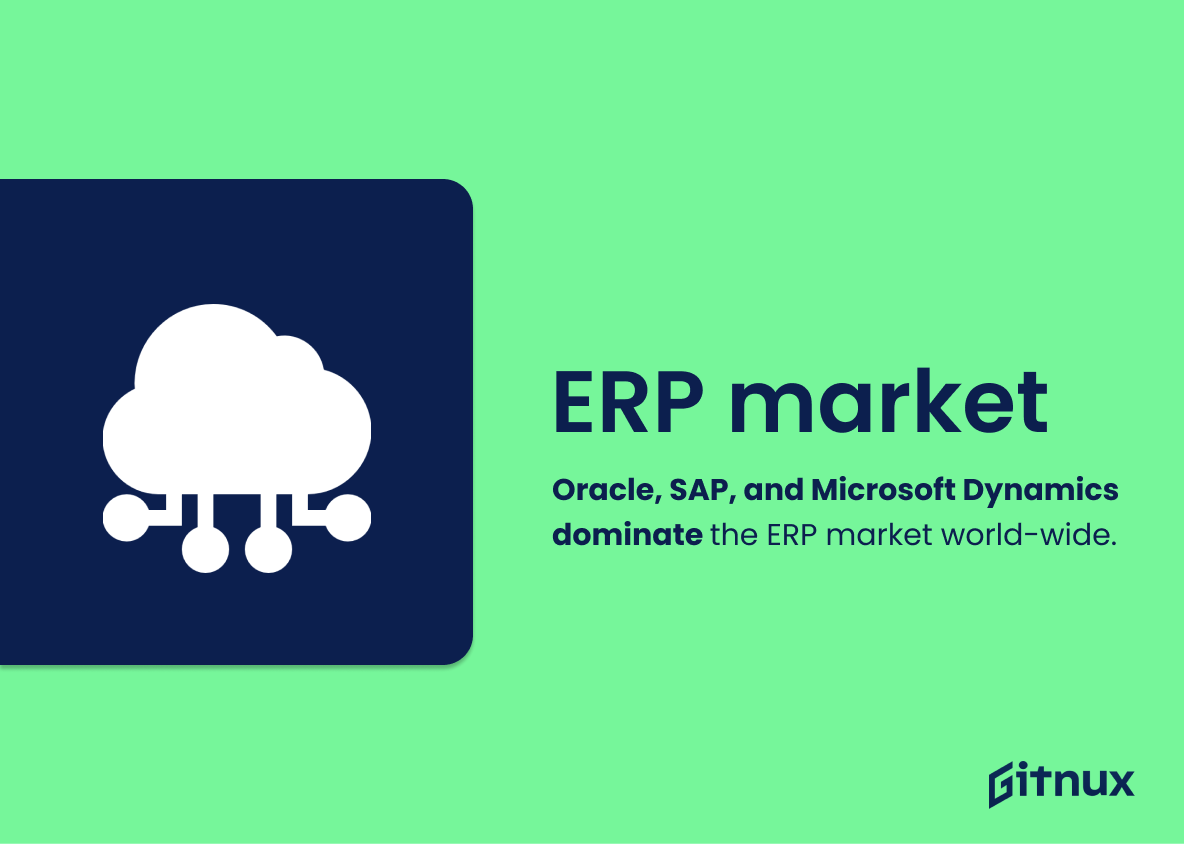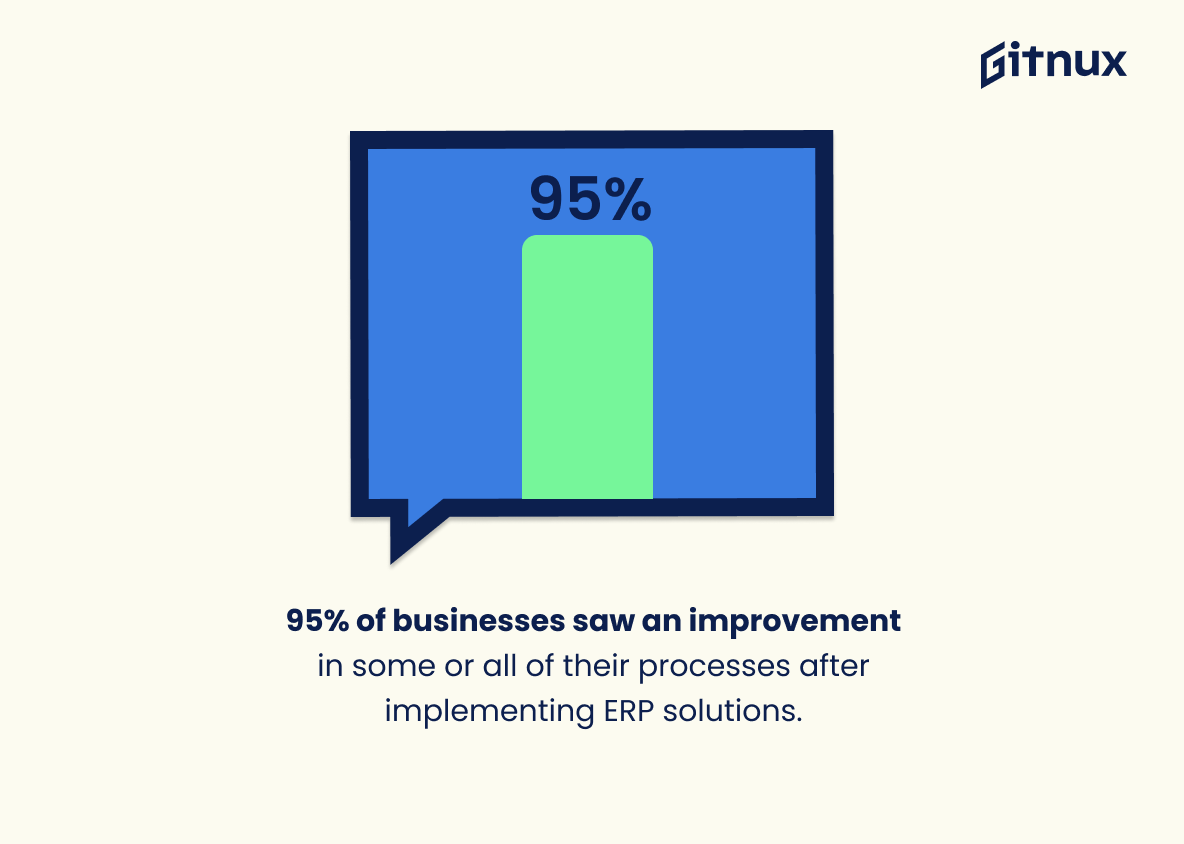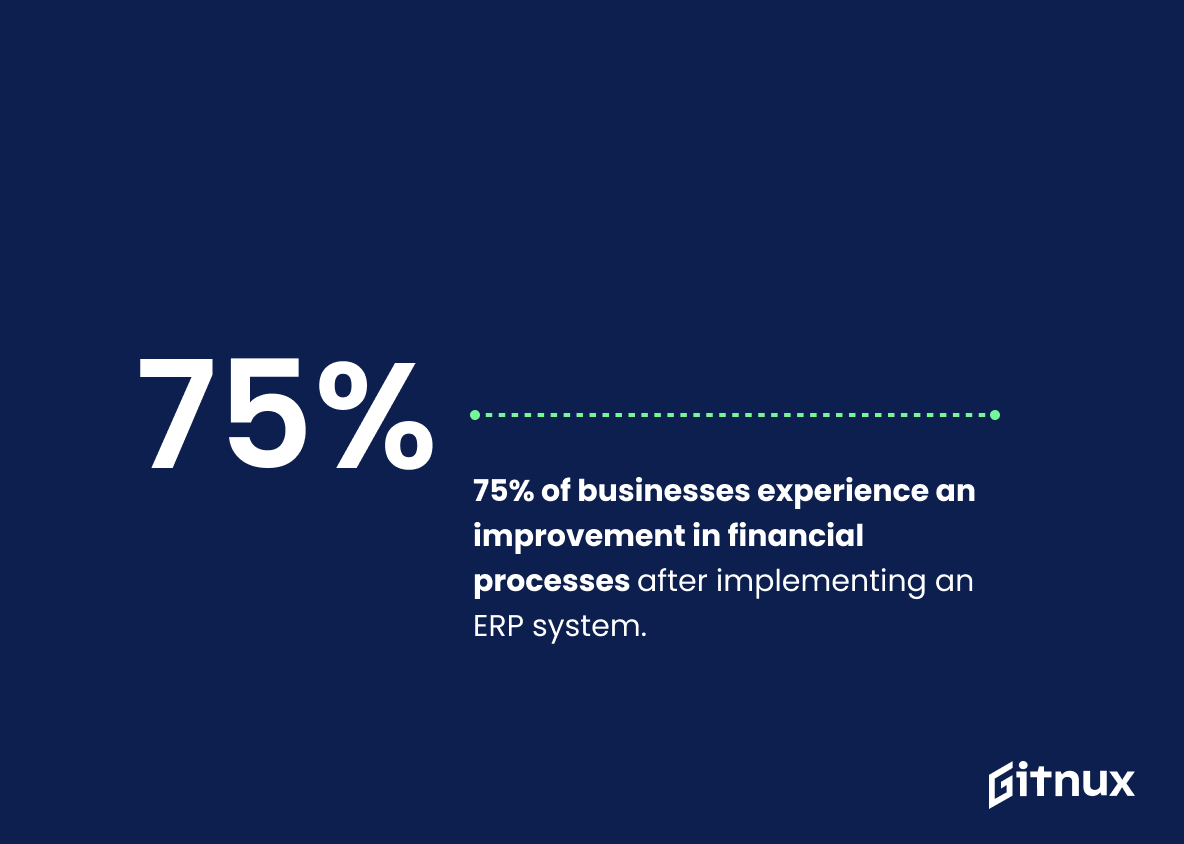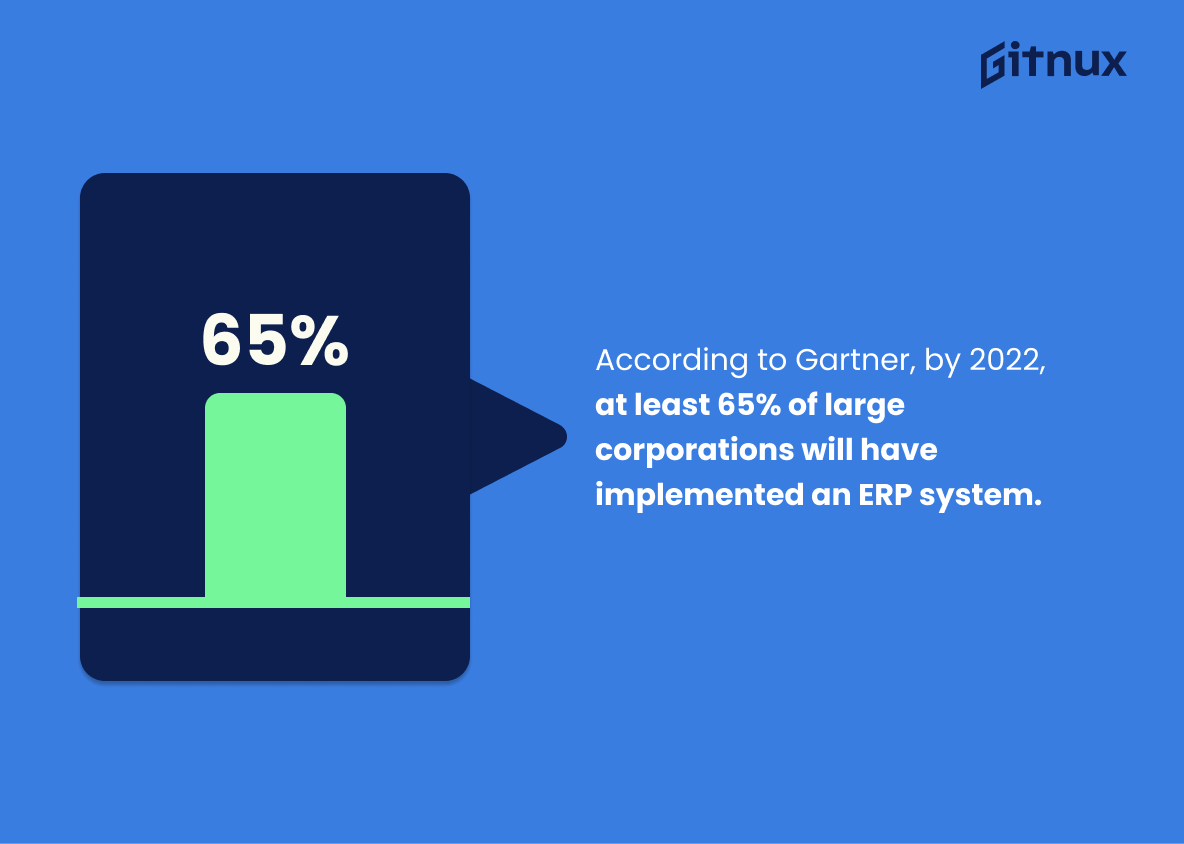In today’s rapidly evolving business landscape, the ability to streamline operations and improve productivity is paramount. The solution often lies in technology, more specifically, in Enterprise Resource Planning (ERP) systems. ERP systems have revolutionized various industry sectors with their multifunctional approach to business processes. Diving deep into the ERP industry statistics can provide valuable insights, indicating how this technology is shaping businesses across the globe.
This blog post aims to demystify the ERP industry statistics, helping decision-makers understand trends, growth rate, market share, and the upcoming trajectory of this booming industry. Buckle up as we journey through the numbers and facts that define the ERP industry today.
The Latest ERP Industry Statistics Unveiled
The global ERP software market is expected to reach USD 71.63 billion by 2026, growing at a CAGR of 9.8%.
Highlighting the significant projected growth of the global ERP software market underlines both the ever-increasing relevance and the robust health of this sector. With the market poised to hit USD 71.63 billion by 2026, riding on a CAGR of 9.8%, it speaks of an industry on the move in terms of innovation and adoption. It thrusts into prominence the burgeoning opportunities for industry players, from new market entrants to established monoliths.
Furthermore, it underscores the importance for businesses across the board to adapt and align their strategies with ERP solutions, thereby accelerating their digital transformation journey. In a nutshell, the sheer magnitude and growth rate of the industry pulsate with the potential it holds and the transformative role it plays in shaping the business landscape of tomorrow.
In 2019, the ERP software market reached USD 39.65 billion.
As you navigate through the landscape of the ERP industry, it’s crucial to grasp the monetary magnitude of the ERP software market. Picture this, back in 2019, an astounding USD 39.65 billion was the benchmark achieved by the ERP software market. Painting quite the bull market image, this feat warrants a scrutinizing look into the sector’s inner workings. It becomes a monetary marker not just indicative of the immense scale of the industry but alludes to the innumerable opportunities that lay in the ever-evolving realm of ERP.
As we draw on these facts, they serve as a compelling precursor to the future potential and profitability that this burgeoning industry could offer.Moreover, an understanding of this staggering figure can help position the ERP software market within the larger context of the tech industry, highlighting the importance of continued innovation, competitiveness and relevance in the vast domain of ERP.
According to Panorama’s 2020 ERP Report, 81% of organizations are either in the process of implementing ERP software or have completed implementation.
Delving into the realm of ERP industry statistics, one cannot ignore the pivotal revelation from Panorama’s 2020 ERP Report. Highlighting the fact that a whopping 81% of organizations are either knee-deep in the course of implementing ERP software or have already crossed the finish line, paints a vivid picture of the industry’s current landscape.
The mounting number speaks volumes about the growing dominance and acceptance of ERP software in the business sphere. It showcases how organizations globally are recognizing the strategic value of integrating ERP solutions to streamline processes, enhance efficiency and thereby gain a competitive edge.
Moreover, it serves as an indicator of the substantial market potential for ERP vendors, fueling the prediction of the industry’s growth trajectory. Not merely a number, this statistic, then, is akin to a beacon illuminating the existing ERP adoption trend and the realm of possibilities that lay ahead in the ERP industry.
According to the same Panorama report, 57% of organizations increased their operational efficiency through ERP implementation.
The aforementioned statistic paints a compelling portrait of the ERP industry’s potential. By indicating that 57% of organizations have seen improvement in their operational efficiency after an ERP implementation, it punctuates a key selling point of ERP technology.
It underscores the transformative power an ERP system can have on operational workflows, revealing that over half of companies implementing such systems experience enhanced efficiency, thus lending credence to the argument for ERP investment. Essentially, this statistic becomes a beacon of optimism, acting as a persuasive instrument, bringing into focus the tangible benefits and justifying the financial commitment required for ERP integration.
According to ERP Software Market Report, in 2018, the on-premise ERP software segment accounted for more than half of the total market share.
Grasping the meaningful essence of the quoted statistic offers a captivating perspective on the cyclopean domination of the on-premise ERP software segment in 2018. Possessing more than half of the entire market share, it’s akin to a powerful titan reigning over the ERP Software Market landscape. This erstwhile dominance reinforces historical trends of software utilization within the sector, providing readers with a meaningful baseline to comprehend shifts and evolutions in market preference.
As we voyage through the seas of digits depicting ERP Industry Statistics, such anchors of past context become invaluable. Unraveling this statistic, we can dig deeper into the roots of on-premise system preference, and inquire, will cloud solutions alter the trajectory of this industry giant?
According to ResearchAndMarkets.com, Asia Pacific is forecasted to grow at the highest rate during the forecast period 2020- 2027.
As we delve into the intricate dynamics of the ERP industry, one cannot overlook the noteworthy prediction made by ResearchAndMarkets.com. The reputed research firm brings our attention to the Asia Pacific region, forecasting it to experience monumental growth between 2020 and 2027. This realm of predictive analytics illuminates the opportunity-rich terrain in the Asia-Pacific region for ERP market players. Countries like India, China, and Japan, known for their propensity towards technological advancements, could become the crucible for remarkable growth and innovation in the ERP landscape.
If aligned strategically, such growth can translate into a thrilling crescendo of opportunities for ERP vendors and a transformative phase in the global ERP industry. So, while we’re orchestrating symphonies of numbers and charts, this piece of statistic implores us to tune in to the melodies serenading from the Asia-Pacific. After all, it’s not just data; it’s the rhythm of future possibilities.
According to the same source, professional services, manufacturing, and retail will continue dominating the global ERP market.
Foreseeing the future of the rapidly evolving ERP industry, these statistical snippets of wisdom serve as a guiding compass. They allow a more precise and targeted approach for ERP developers to focus their efforts, knowing fully well that professional services, manufacturing, and retail are slated to remain the key players in the global ERP market. This spotlight on the ‘upcoming’ sets the tone for a more strategic positioning, technology allocation, and better market penetration, hence, cushioning the downstream impact on investment and ROI decisions. It’s akin to knowing the battlefield layout before waging the war.
In 2020, ERP projects took an average of 18.4 months to implement.
Illuminating the horizon of ERP industry statistics, the intriguing fact that ERP projects, in 2020, took an average span of 18.4 months to implement unfolds a compelling story about the industry’s dynamics. This numeric embodiment of time unveils the complex and time-intensive nature of ERP projects. It’s like the clock’s hands knitted into the fabric of these projects, indicating their intricacies and the level of commitment they require.
Echoing in each tick-tock are the extensive planning, rigorous testing, meticulous execution, and the inevitable adjustments that these projects demand. Infused in this timeline is a sobering reminder to prospective clients and organizations about the patience and resources inevitably tied to successful ERP implementation. Not just a mere number, 18.4 months encapsulates the strategic timeline enterprises should anticipate when embarking on the ERP voyage.
By 2020, only 23% of ERP users indicated that they had a significant amount of their workforce using their ERP software to perform their jobs more effectively.
When evaluating the ERP industry from a statistical perspective, the fact that only 23% of ERP users reported a significant portion of their staff utilising ERP software to increase job efficiency by 2020 is a statistic that shouldn’t be overlooked. This echoes the reality of potential underutilisation of ERP capacities within organizations.
It prompts both ERP providers and companies to reassess their training and implementation strategies, ensuring that their workforce is empowered to fully exploit the capabilities of ERP software. Shining a spotlight on this statistic underscores the need for continuous progress and innovation in the ERP sector, turning the situation into an opportunity for enhanced user experience and industry growth.
In 2017, enterprise resource planning (ERP) software was used by over 53% of businesses.
Drawing attention to the prevalence of ERP software adoption in 2017 is like illuminating a key waypoint on the trajectory of the ERP industry journey. By shedding light on the fact that more than half of businesses were investing in ERP software at this point in time, we sketch a backdrop of the industry’s burgeoning significance.
It paints a vivid picture of the turning tide in business operations, where the shift toward digital integration and centralized management was not a future possibility, but an ongoing reality. Placed in the blog post, this statistic essentially underscores the rapid evolution and acceptance of ERP software across various sectors, setting the stage for discussions about current trends and future projections in the ERP industry.
Oracle, SAP, and Microsoft Dynamics dominate the ERP market world-wide.
Illuminating the dominion of Oracle, SAP, and Microsoft Dynamics over the global ERP market serves as a beacon, highlighting the current trend and painting a clear picture of the ERP industry landscape. Through this lens, readers can gauge the immense influence and reach these giants possess, wielding their power to shape the trends and dictates of the ERP world. Thus, offering a compass of understanding for those navigating the convoluted ERP industry in the blog post.
About 95% of businesses saw an improvement in some or all of their processes after implementing ERP solutions.
In the realm of ERP industry statistics, envision a landscape where nearly every business that plunges into the sea of ERP solutions doesn’t just stay afloat but glides ahead. The statistic tells us that a staggering 95% of businesses reported enhancements in some or all of their processes after riding the ERP wave.
It paints a lucrative, compelling portrait for other businesses standing on the edge, contemplating a dive into ERP implementation. Thus, it vouches for ERP solutions not merely as an operational supplement, but possibly as a game-changer capable of upscaling efficiency and productivity of business processes, becoming a lighthouse guiding others towards an alluring prospect.
Approximately 75% of businesses experience an improvement in financial processes after implementing an ERP system.
Embedding an intricate tapestry of empirical evidence in your exploration of ERP Industry Statistics, it’s quite profound to spotlight that a stunning 75% of businesses observe a fiscal metamorphosis post ERP system implementation.
This compelling figure forms a persuasive pillar of the narrative, highlighting the monumental impact of ERP solutions on financial operations. It delivers robust validation for enterprises contemplating ERP deployment, painting an encouraging picture of improved efficiencies and promising gains in their fiscal management landscape.
Moreover, this potent statistic amplifies the conversation, enchantingly drawing the spotlight towards the powerful potential of ERP systems to deeply transform business economy. It establishes an engaging dialogue for readers, enticing them into the bigger story about the efficacy and the industry-wide transformation driven by ERP solutions.
According to Gartner, by 2022, “at least 65% of large corporations will have implemented an ERP system.”
Gartner’s prediction propels the significance of ERP systems into a whole new realm. Anticipating that at least 65% of large corporations will enact an ERP system by 2022 provides an innovative landscape for the ERP industry, setting a high benchmark for growth and development.
It becomes a focal point in the panorama of ERP industry statistics as it unleashes dual implications. First, it communicates the burgeoning recognition of ERP solutions amongst large corporations, anchoring ERP’s indispensability in managing complex business processes. Second, it bolsters the opportunities for ERP providers, paving the way for market expansion and intense competition.
This prediction is much like a tipping point that will instigate a domino effect. As more corporations embrace ERP systems, it could encourage small-to-medium enterprises to follow suit, boosting the ERP industry as a whole. Hence, Gartner’s statement isn’t just a statistic—it’s a testament to the potential growth and transformative power of ERP systems.
Conclusion
As we conclude this blog post, it’s evident that the ERP industry is undergoing a significant transformation. Increased adoption levels, lucrative growth forecasts, and dynamic shifts towards cloud-based solutions present immense potential for businesses globally. These ERP industry statistics reveal a business landscape that is becoming increasingly centered around efficiency, integration and real-time data access.
Whether you’re a small business or a global corporation, understanding and leveraging these trends can help you stay ahead in the competitive business world. Be sure to keep updated with such patterns and growth measurements in ERP, as it will undoubtedly be a critical determinant in the future of business management and strategy.
References
0. – https://www.www.datamation.com
1. – https://www.www.fortunebusinessinsights.com
2. – https://www.selecthub.com
3. – https://www.www.researchandmarkets.com
4. – https://www.www.gartner.com
5. – https://www.financesonline.com
6. – https://www.www.oracle.com
7. – https://www.www.alliedmarketresearch.com
8. – https://www.www.panorama-consulting.com
